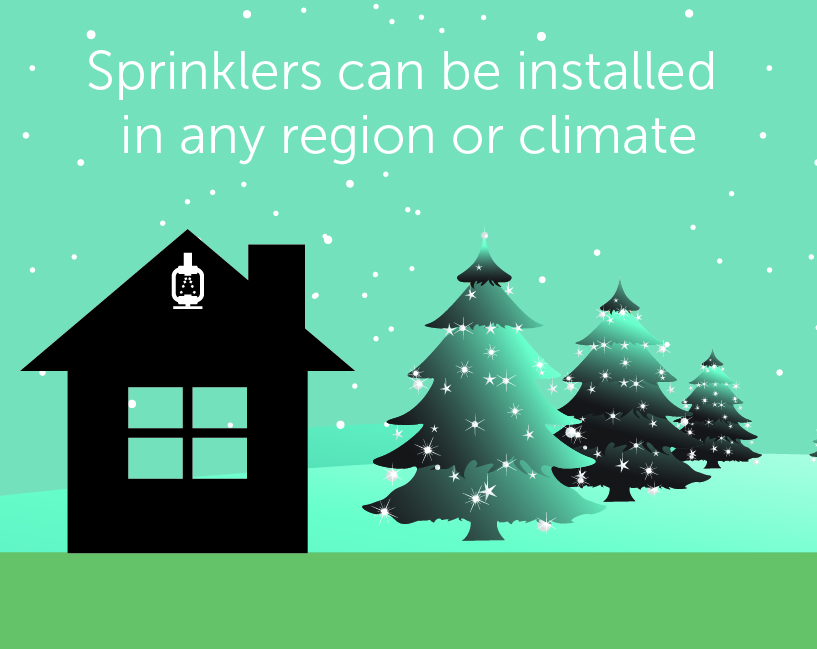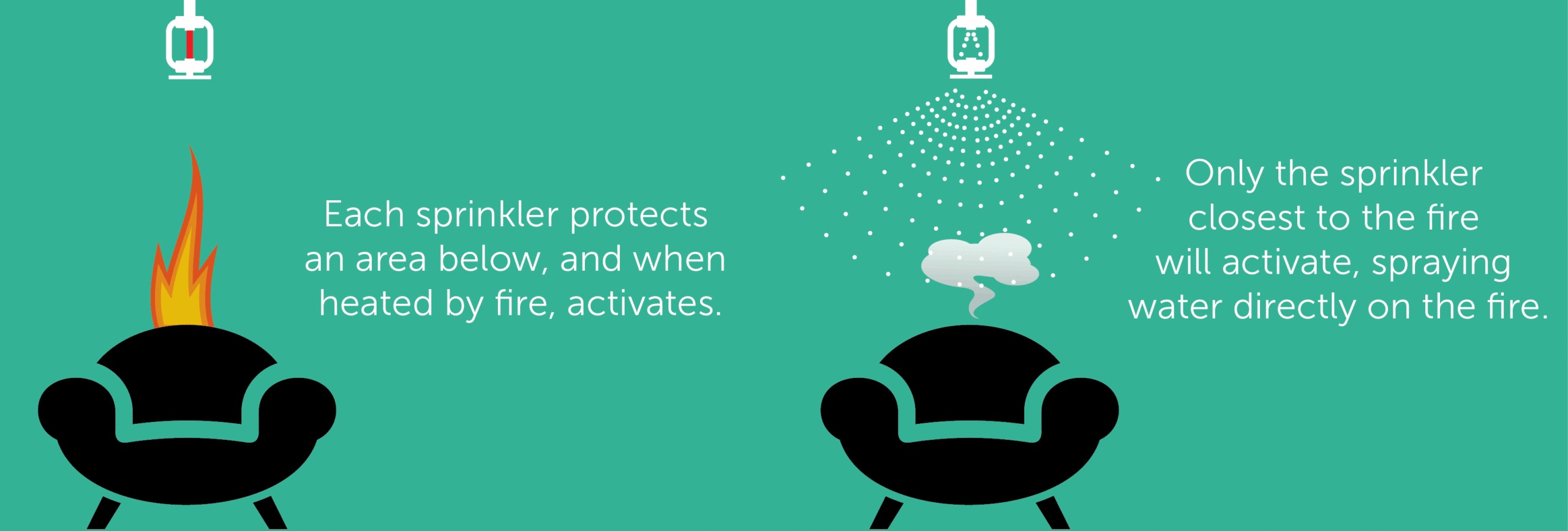A recent survey of Canadian fire chiefs found that misconceptions about home fire sprinklers is a major hurdle in increasing awareness and acceptance. Part of this is due to how sprinklers are misrepresented in the media, TV and movies. It is also due to lack of effort in presenting sprinklers when opportunities arise. We also found that there may be a lack of awareness among fire service representatives because they are not exposed to home fire sprinklers on a regular basis.
There are numerous Canadian cities that have installed fire sprinklers in new construction homes, some for more than 30 years. The myths are easily refuted with education on how sprinklers operate and the life-saving benefits. Public education programs that include live side-by-side burn and sprinkler demonstrations help to counter the myths. Spectators can see first-hand how fast a fire spreads without sprinklers and how quickly heat from a fire activates a sprinkler to control or extinguish a fire.
Let’s look at some of the myths and how they are busted:
•Myth: When a smoke alarm activates so will my sprinklers –Understanding how sprinklers work is key. They work by a fusible link or glass bulb being exposed to high temperatures (between 57 C and 74 C) for an extended period. Even then, only the sprinkler closest to the fire will activate. Burning toast will not set off the sprinklers. Educating homeowners and others about how sprinklers function is important. This includes homeowners living with sprinkler to ensure they never disconnect these systems.
•Myth: Sprinklers will leak – Home fire sprinkler systems are designed and installed by trained and certified contractors using listed products. The standard for installation and the systems have been proven to be reliable.
•Myth: Water damage will be worse than fire damage – When fire crews respond to a fire without sprinklers, they will often arrive at the scene six or more minutes after they receive the call. Their hoses will use 250 gallons of water per minute inside and outside the home. Sprinklers activate in as little as 1 ½ minutes, well before the fire department arrives, containing or extinguishing the fire at a flow rate eight times less than what the fire service will use. In many cases the home can be reoccupied the same day following an all clear by their fire department.
•Myth: Home insurance will increase due to potential water damage – When a home is protected with fire sprinklers, water damage from the sprinkler is typically much less than the cost of property damage from a fire. In fact, insurance providers such as The Co-operators in Canada and State Farm in the US have taken a leadership role in advocating for sprinklers through their roles with HFSC and in offering discounts for homeowners who live in homes protected with fire sprinklers.
•Myth: Sprinklers can freeze during the winter months – This is best refuted by increasing the awareness of the design standard, NFPA 13D. Sprinklers and their piping are installed in insulated spaces or interior walls thus avoiding freeze-ups. Many other cold-weather climates have sprinkler mandates for as long as 30 years. 
•Myth: The fire department will arrive in time to put the fire out – This myth is tied to the lack of understanding about the devastating challenges of modern fires. Modern fires can be fatal in as little as two minutes. A sprinkler will activate as soon as the heat reaches the sprinkler, often in less than two minutes. When the fire is controlled or extinguished, everyone in the home can safely evacuate.
•Myth: New construction is safer – An analysis of fire loss statistics does not support this claim. Although building codes have advanced, changes in home design since the 1950s, influence fire growth. Modern construction methods such as the light weight trusses create a greater risk to firefighters. Open living spaces permit fires to grow to larger sizes. National Research Council of Canada studies have identified floor failures in as little as 6 minutes into a basement fire but when sprinklers were present at no time did the homes become untenable in a fire.
•Myth: With smoke alarms you don’t need sprinklers – Smoke alarms will alert people if there is smoke. Then it is up to them to safely escape, often in as little as two minutes before the fire becomes deadly. Fire sprinklers stop the fire from becoming deadly, allowing people to safely escape.
To increase public awareness about the lifesaving benefits of sprinklers, we must be pro-active in dispelling the myths. Simple messages that state the facts about sprinklers should be part of your public education campaign. Many people do not understand sprinklers and their lifesaving benefits. Increasing awareness and overcoming the myths will increase demand. HFSC Canada has provided resources and information to help in your communication effort.

